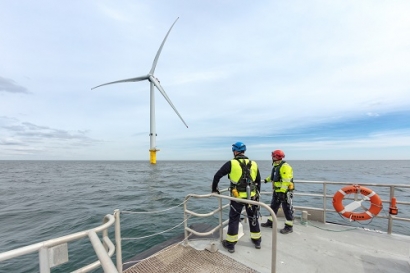
Located off the Northumberland coast, the Blyth offshore wind farm is composed of five turbines with total generation capacity of 41.5 MW. Blyth is the first offshore wind farm to use float and submerge technology. The wind turbines are supported with gravity-based foundations transported by floating, which reduces the installation costs. The 8.3 MW turbines are amongst the most powerful of their type to be used offshore. A dedicated operations and maintenance team with nine members has been set up at the Port of Blyth.
The EDF Group, in the form of EDF Renewables in the UK, already operates the 62 MW Teesside offshore wind farm located around 80 km to the south of the new Blyth facility. In May, the Group acquired the 450 MW Neart Na Gaoithe wind project off the east coast of Scotland and has been granted all the administrative permits.
The 49 MW battery storage facility located at West Burton B power station is the largest project in the new frequency control system which will be deployed across the UK to improve stability of the national grid.
Against the backdrop of extensive development of renewable energy generation and the closure of ageing power plants, battery storage technology supports stability of the grid and can be used for rapid response to fluctuations in grid frequency.
According to Jean-Bernard Lévy, the EDF Group Chairman and CEO, the two projects demonstrate EDF’s expertise in renewable energies and electricity storage.
Bruno Bensasson, Group Executive Vice-President in charge of Renewable Energies concluded, “I am delighted to inaugurate these innovative projects. They demonstrate that EDF Group plays a significant role in the shaping of renewable energies and is able to offer reliable solutions for global expansion.”

